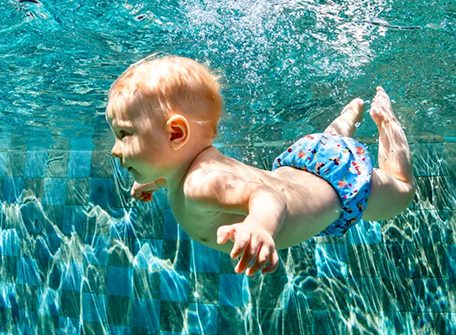One of the topmost bright sides in the field of rehabilitation in recent times is the elaboration of hydrotherapy / aquatic therapy, which helps patients with a spectrum of difficulties such as:
• affected muscle strength
• balance and coordination
• posture
• endurance
• agility and function
• body mechanics and several other needs.
Children of all ages and abilities usually enjoy being in the water. This can be especially true for children with sensory processing difficulties similar to those who have Autism Spectrum Disorder, Attention Deficit Hyperactivity Disorder, Developmental Delay, and Sensory Processing Disorder.
Water’s unique quality provides gentle pressure, buoyancy, and soothing support that has numerous benefits for children with sensory needs.
When children are immersed in water, it can not only help them with sensory processing skills but also strengthen the muscles as they have generalized motor weakness, and improve their motor performance, improve their social and communication skills, and self-regulation knacks.
Sensory Processing
Before we get to know how hydrotherapy can benefit sensory difficulties, first, let’s discuss how being in a water environment can help strengthen sensory processing skills.
1. Hydrostatic Pressure:
As children with sensory difficulties, frequently love deep pressure. Hence, they enjoy activities such as joint pressure or being tightly wrapped in a blanket or wearing a weighted jacket.
Similarly, when the child is submerged in water, it surrounds the child’s body distributing an equal and consistent amount of pressure throughout the body.
This pressure that the liquid exerts is called hydrostatic pressure. The result is an especially calming environment that soothes the child, helps them concentrate and organize other sensory inputs, and gives them more confidence to try new movements.
2. Buoyancy:
Children with sensory difficulties often have weak muscles. When entering the water, the child’s body weight is carried by the water. This sensation is often referred to as feeling weightless. As the body weight is carried by the water, the child can strengthen their muscles without feeling like they are working too hard. The support of the water also aids balance and reduces pain. The water creates resistance, ensuring muscle and movement resistance, building up the child’s strength level.
Working in water can enhance core strength, reduce pain and stress on the joints and soft tissues, improve motor planning and fine motor skills, strengthen oral motor skills, and increase breathing control.
3. Vestibular Stimulation:
The vestibular system in humans includes parts of the inner ear and brain that help control balance and eye movements. Some of the repetitive behaviors that children sometimes exhibit, such as flapping of hands, rocking their body, and circling around self are directly related to an underdeveloped vestibular system. Children engage in these activities because they are trying, by external measures, to develop a sense of balance.
Moving through water naturally produces a rotatory torque on the body, which enhances and effectively stimulates the vestibular system.
Children are also better able to switch between different positions in the water, such as from standing to floating, which engages their vestibular system and increases the amount of vestibular input they get. The spatial imbalance brought on by vestibular diseases can be lessened because to this increase in vestibular input.
4. Proprioception:
Proprioception, otherwise known as kinesthesia, is our body’s ability to sense movement, action, and location, basically to understand where the body is in space.
An underdeveloped proprioceptive system can result in movements that can be clumsy or inconsistent. In water, the resistance children encounter when they move, the feel of water rushing past them, and the hydrostatic pressure all combine to give enhanced proprioceptive feedback and improve this sense.
5. Visual Processing:
In the pool, the therapist can work on the components such as matching, scanning, tracking, etc. Throw some colored balls in the pool and ask the child to bring the desired asked color, or similar can be done with the help of alphabets or numbers. Additionally, there are certain elements intrinsic to water (turbulence, splashing of water, water jets) that create a visual, tactile, and proprioceptive feast. This makes it possible for children to feel what they see, and vision becomes evident.
In this manner, aquatic therapy promotes enhanced body awareness, improved touch tolerance, and a better ability to organize all the various sensory inputs to focus on the correct one.
Physical Benefits
In addition to all the sensory processing benefits, aquatic therapy also helps children improve their motor performance. Children with sensory processing disorders also have physical deficits such as reduced muscle tone, and reduced Oro-motor skills, being can water can help them with skills such as blowing, sucking, etc. Flip toys, straws, and ping pong balls can be used for these. Being in the water makes the body lighter and more buoyant, and reduces the fear of injury, making children feel more confident trying new movements that they might never try on land. This in turn promotes improved body awareness and motor planning.
Other physical benefits of exercising in water include reduced pain and stress on joints and muscles, a strengthened core, and enhanced breathing control.
Social and Communication Benefits
Group sessions conducted in the pool really encourage social play that children with autism and sensory issues have difficulties with. After a session of hydrotherapy, children often have better mood, better impulse control, decreased anxiety, and better attention span.


